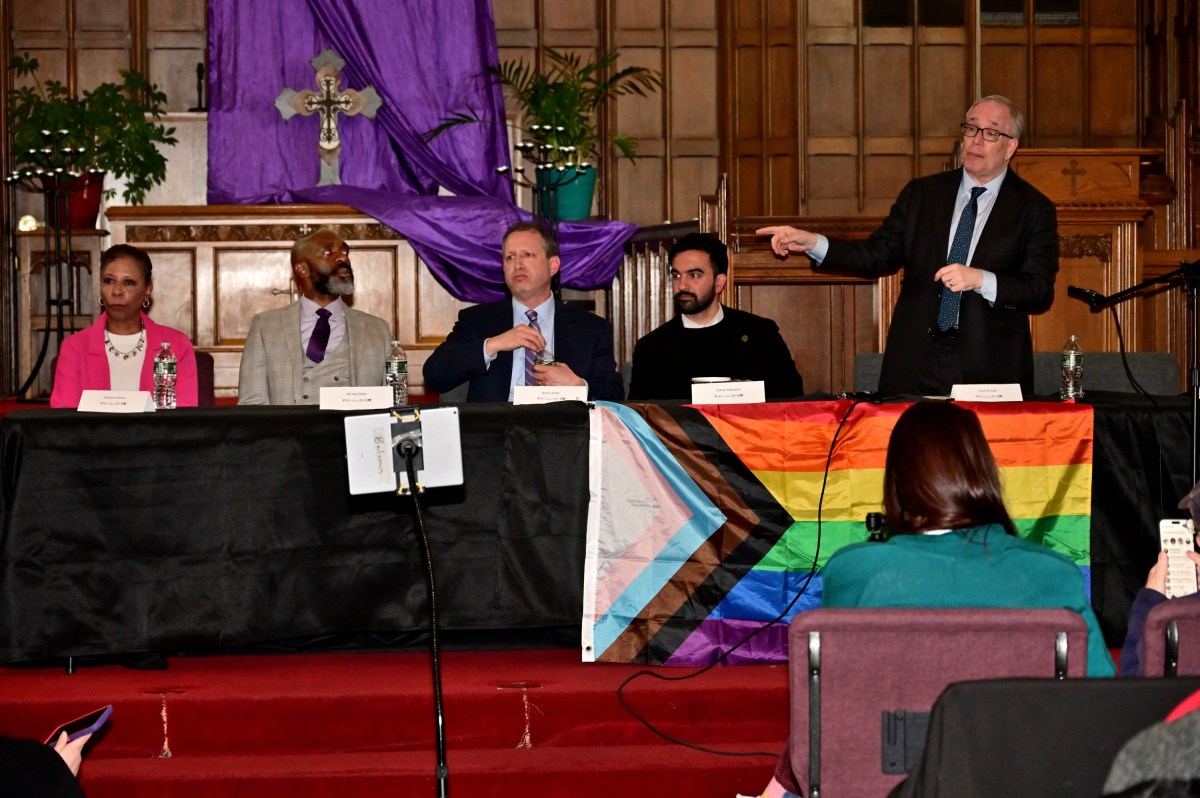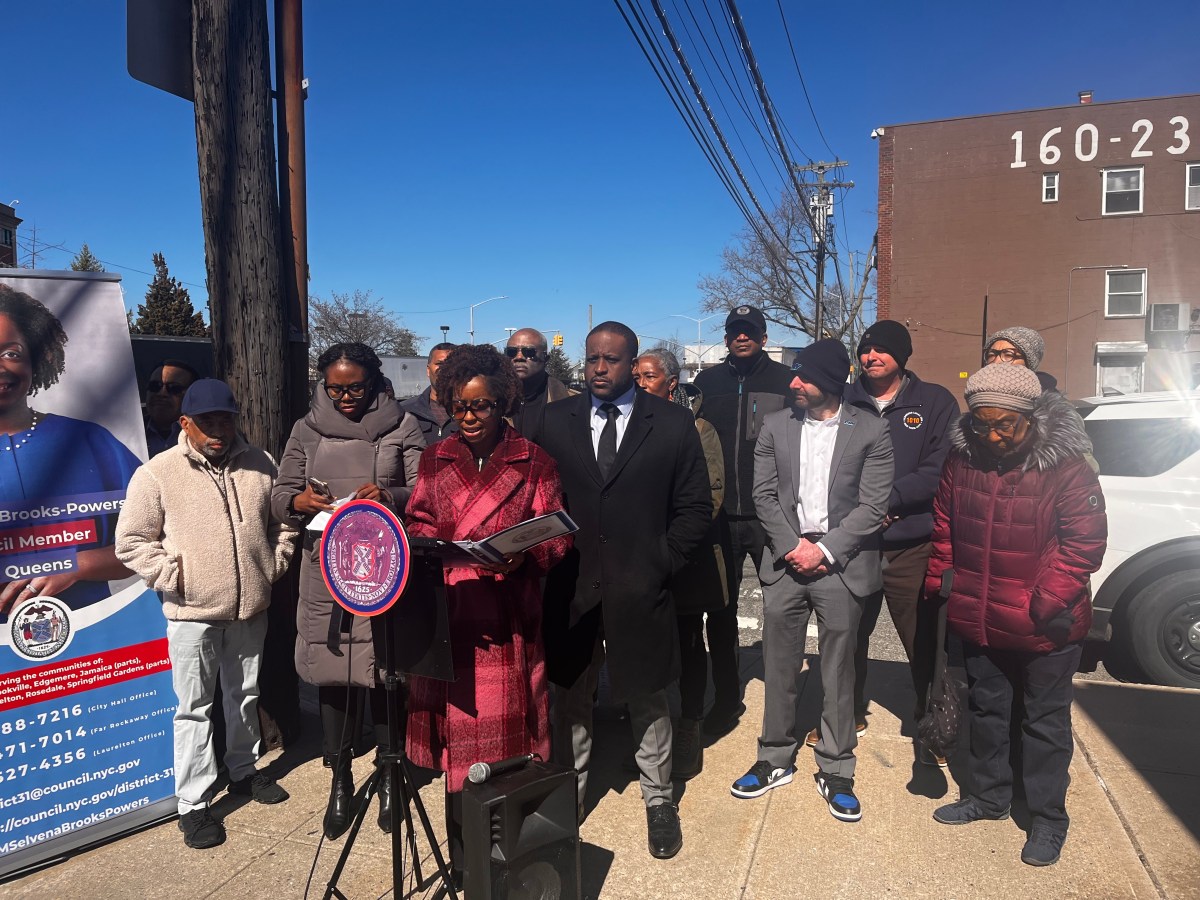
A state Supreme Court judge will hear arguments next month on whether a redesign of Fort Greene Park, which includes the destruction of more than 80 mature trees, should include an environmental impact study.
The city Department of Parks and Recreation is in the process of securing contracts for its $10.5 million plan, which includes improvements to paths, entrances and drainage, as well as the removal of the perimeter wall and the creation of a pedestrian plaza in the northwest corner.
The Parks Department designated the redesign as a Type II project, which is considered to involve work that is “routine or continuing agency administration and management” and skirts an environmental impact study, according to the lawsuit. Park advocates, however, argue the new landscaping will radically change parts of the park and should be deemed a Type I project, which would require an environmental review under state law.
“Parks is saying this is routine maintenance. We are saying no, this is a complete redesign of the park,” said Enid Braun, a founding member of Friends of Fort Greene Park. “If there is a park that is heavily wooded and if they were going to cut all that down and put in a ball field, say, that wouldn’t be considered a repair. That would be a redesign because it affects use.”

The lawsuit, brought by the Sierra Club, Friends of Fort Greene Park and City Club of New York, asks the state Supreme Court to void the city’s approval of the project and place an injunction on construction related to the redesign until an environmental study is completed. Oral arguments set to be held Thursday were postponed until Sept. 10.
The suit takes issue with plans for the northwest corner of the park, which include the removal of dozens of mature trees and the addition of 13,314 square feet of concrete for a promenade to the Prison Ship Martyrs Monument. Citing state law, Braun said an environmental review should be done if there’s even a possibility of negative effects.
“We believe, given that the replacement trees will be 3- to 5-inch caliper trees, and it takes a tree 20 to 30 years of maturity to do its job in terms of climate mitigation and pollutants, that this kind of wholesale removal will create really quite dire impacts — heat island index, we don’t know the impact on migrating birds,” she said.
A spokesman for the city’s Law Department said the Parks Department "fulfilled its environmental review obligations under the applicable state and city laws."
“The $10 million in improvements to Fort Greene Park will improve access to the park for people of all abilities, create more usable space for the community, and greatly expand the recreational opportunities on the northwest end of the park — all features that were explicitly requested and approved by elected officials, the community board, and most importantly, the surrounding neighbors of Fort Greene Park,” the spokesman said in an emailed statement.

Fort Greene Park is Brooklyn’s oldest park, dating to 1847. It was designed 20 years later by renowned landscape architects Frederick Law Olmsted and Calvert Vaux.
In 2016, the 30-acre park was selected for the city’s Parks Without Borders initiative. The program aims to remove the physical barriers of city parks to make them more open and accessible.
Opponents of the redesign contend the Parks Without Borders concept inherently changes the original vision of the park brought to life by Olmsted and Vaux.
The lawsuit also points to several recommendations from the Parks Department’s own 2015 Historic Resource and Management and Operations Study, which was meant to help guide capital projects and was cited as the basis for not conducting an environmental review.
Initially, the department had released a redacted version of the report to support its position against the environmental study. Several groups successfully sued the department in order to obtain the full report, which revealed several contradictions between its recommendations and the Parks Without Borders redesign.

Landscape architecture firm Nancy Owens Studio LLC, commissioned to conduct the study, celebrates Olmsted and Vaux’s original vision for the park throughout the report. It also recommends repairs to the existing perimeter wall rather than removing it and instituting a tree management program.
“The overall picturesque character of openings (lawn) and enclosures (canopy) of the Olmsted and Vaux plan should be maintained and serve as a guide for future plantings,” the report says. “Future new planting beds should, to the extent possible, respect original design intentions, and should be incorporated into future capital projects.”
Of the 83 trees slated for destruction, 58 are in the northwest corner where the concrete plaza will be built along with a new fountain. Only a handful of those trees were deemed sick or toward the end of their life span, according to Braun, and the rest will be felled solely to actualize the redesign.
“Friends of Fort Greene Park agrees that this part of the park has been neglected, and we do very much support real repair and upgrades like lighting so kids can play basketball after dark, that sort of thing,” Braun said. “What we understood was that this design was a take it or leave it. That the Parks Without Borders [initiative] has strings, and either we accept the design or the money goes away. And that’s been the problem.”
The Parks Department estimates the procurement phase of the project will be completed by December. Construction could start in 2020, though there is no set date on the Parks Department website. If the lawsuit is successful, construction would be delayed while an environmental impact study is conducted.

































